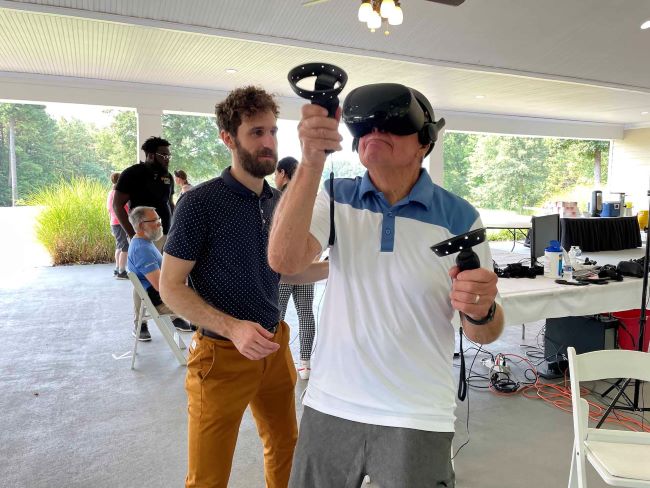Virtual reality to improve the life quality of patients with Parkinson’s disease

Parkinson is a chronic neurodegenerative disease, which affects millions of people worldwide. It is said that in Spain, in populations between 65 and 90 years of age, there are approximately 200 people per 100,000 inhabitants who suffer from it. It affects the motor system and produces shaking, stiffness and has a significant impact on the quality of life of the various patients.
However, in recent years, Virtual Reality has become a tool which promises a change in this disease and new treatments. Virtual Reality allows you to immerse yourself in an environment by simulating situations. As it relates to Parkinson’s it is used to create interactive virtual environments which can help improve the motor and cognitive symptoms of patients. This technology can be reflected to the benefit of the disease in different ways. One of them can be Virtual Reality implemented for motor rehabilitation, through programs specifically designed to improve balance, mobility and coordination of patients in their daily exercises. These exercises allow patients to practice specific movements in a safe way, which can lead to an improvement in their ability. These designs are also used for rehabilitation therapies needed by patients. Such technology is also used for cognitive stimulation by creating challenging tasks in virtual environments such as puzzles or memory games to improve cognitive functioning and attention. In turn, patients can perform multisensory stimulation therapies, which allow them to combine different stimuli to reduce muscle stiffness, increase relaxation and promote social interaction. It not only helps physically but also mentally: Virtual Reality is of great help to Parkinson’s patients in managing the stress and anxiety caused by their disease, designing relaxing and pleasurable digital environments to increase their emotional well-being.
Today, Virtual Reality is being used for multiple recovery tasks, be it rhythmic movement therapy, visual stimulation therapies or training of everyday skills such as cooking. In Europe, projects are already underway which use Virtual Reality as an element of therapy for Parkinson’s disease. The European Commission has pointed out the results of two projects funded by the EU in commemoration of International Parkinson’s Day (April 11th) to improve research into this disease. On the one hand, there is the PARREHA project, which has been designed to collaborate with patients in their recovery and overcoming symptoms through visual and interactive stimuli. This project developed tools which showed favorable results in helping patients to overcome their condition. On the other hand, there is the EuroPa project (European Cooperation Network for Parkinson’s disease research, diagnosis and therapy), which is aimed at improving the understanding and treatment of Parkinson’s disease by connecting networks of clinical centers in multiple European countries. This partnership network of clinical centers is located in Austria, the Czech Republic, France, Germany, Israel, Italy, Portugal, Spain, Sweden, the Netherlands and the United Kingdom and its main objective is to create a network of clinical trials in order to establish a central patient registry that will help to find a particular trial for those patients with the necessary profile. This medical information will be stored under pseudonyms to preserve anonymity and privacy.




